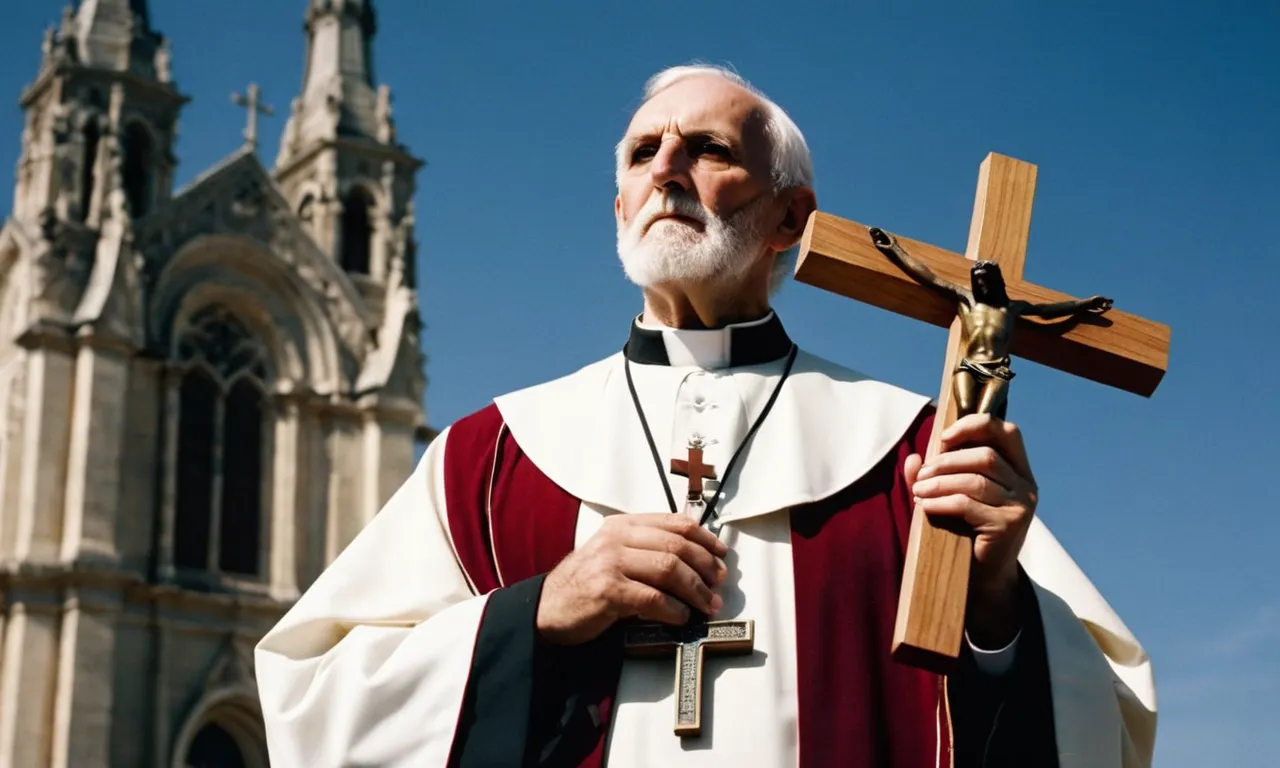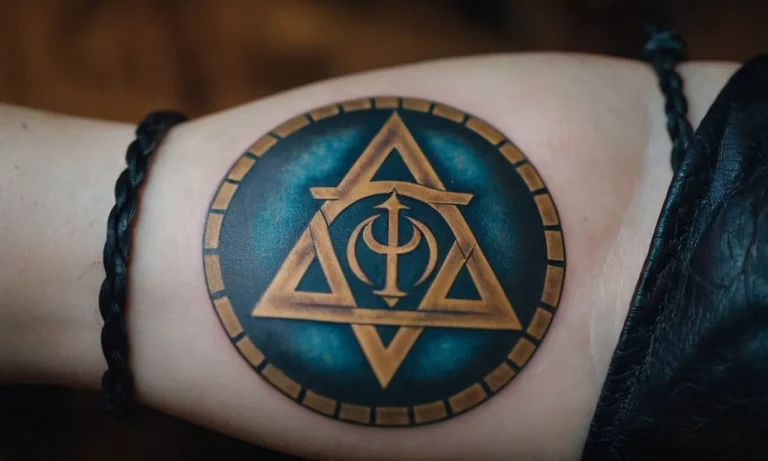What Do Catholics Believe About Jesus?
Jesus Christ stands at the heart of the Catholic faith. For two thousand years, Catholics around the world have looked to him as a source of salvation, inspiration and guidance. If you’re wondering exactly what Catholics believe about this central figure, read on for a comprehensive overview.
If you’re short on time, here’s a quick answer: Catholics believe that Jesus is the Son of God, born of the Virgin Mary, who died for the sins of humanity and was resurrected three days later. Jesus founded the Catholic Church on earth before ascending into Heaven.
In this in-depth article, we’ll explore key Catholic doctrines and teachings related to Jesus Christ. We’ll cover who he is, his divine and human natures, his mission on earth, his sacrifice, the significance of his resurrection and more.
With a focus on Church theology and the Catechism, we’ll provide a holistic look at this foundational aspect of Catholicism.
Jesus is Fully God and Fully Human
Jesus is the Son of God
Catholics believe that Jesus is the Son of God, begotten of God the Father (Mt 16:16; Jn 1:14). This means that while Jesus is fully human, He is also fully divine as the second person of the Holy Trinity.
According to the Catechism of the Catholic Church, “Jesus revealed that God is Father in an unheard-of sense: he is Father not only in being Creator; he is eternally Father in relation to his only Son, who is eternally Son only in relation to his Father” (CCC 240).
As the Son of God, Jesus has always existed with the Father and the Holy Spirit. At the Incarnation, He took on human flesh while retaining His divine nature. This is an amazing mystery – that Jesus is one person but has two natures, human and divine.
Scripture affirms Jesus’ divine sonship in passages like when God the Father said from heaven, “This is my beloved Son, with whom I am well pleased” (Mt 3:17).
Jesus is One Person With Two Natures
The Catholic teaching that Jesus has two natures – human and divine – in one person is called the “Hypostatic Union.” This means that Jesus’ human nature and His divine nature are united in one divine person. He is both truly God and truly man – the God-man.
As the Catechism explains, “Jesus Christ is true God and true man, in the unity of his divine person; for this reason he is the one and only mediator between God and men” (CCC 480).
Jesus’ dual nature can be hard to grasp, but Catholics believe He had to be fully human so that He could identify with us and die for our sins. And He had to be fully divine so His sacrifice would be infinite in value and able to atone for all sins.
As St. Thomas Aquinas summarized it, “We do not belong to Christ through his human nature…but through his divine nature” (Summa Theologiae). Understanding Jesus as both God and man is central to Catholic beliefs about salvation.
The Life of Jesus Christ
Jesus Was Conceived by the Power of the Holy Spirit
Catholics believe that Jesus was conceived not by a human father, but by the power of the Holy Spirit. According to the Gospel, the angel Gabriel appeared to Mary and told her she would conceive and bear a son even though she was a virgin. The child would be called the Son of God.
This miraculous conception is known as the Virgin Birth. Catholics teach that through the overshadowing of the Holy Spirit, Jesus was conceived by Mary to show that He is the Son of God and not just another prophet or teacher.
Jesus Grew Up in Nazareth
The Gospels do not record much about Jesus’ childhood, but they do mention that He grew up in Nazareth. This small village in Galilee was where Joseph and Mary raised Jesus. Growing up, Jesus would have learned Joseph’s trade as a tekton, which probably meant that Joseph was a builder or craftsman.
Jesus lived a normal childhood helping Joseph in his workshop and doing the same things most children would do at that time. When Jesus began His ministry, people were surprised that this man they had known growing up as the son of Joseph the carpenter was now claiming to be the Messiah.
Jesus Began His Public Ministry at Around Age 30
The Bible first mentions Jesus as an adult when He travels to the Jordan River to be baptized by John the Baptist. Catholic tradition holds that Jesus began His public ministry around the age of 30. After being baptized, Jesus spent 40 days fasting in the desert where He was tempted by the devil.
Having successfully resisted temptation, Jesus returned to Galilee and began teaching in the synagogues and preaching the coming of God’s Kingdom. He also called His first disciples Peter, Andrew, James, and John.
For about three years, Jesus traveled through Galilee and Judea teaching large crowds, healing the sick, and proclaiming the good news of salvation. His public ministry culminated in His death by crucifixion in Jerusalem and His glorious resurrection on the third day.
The Teachings of Jesus
Love of God and Neighbor
One of the central teachings of Jesus was to love God with all your heart, soul, mind and strength, and to love your neighbor as yourself (Matthew 22:37-39). Jesus taught that loving others is second only in importance to loving God.
He used parables like the Good Samaritan to illustrate what it means to love and care for others, especially those in need or who are marginalized. Loving others demonstrates our love for God and is core to living as followers of Christ.
The Kingdom of God
Jesus proclaimed that the kingdom of God was near and told parables to describe what it is like. The kingdom refers to God’s rule and reign on earth. Jesus taught that though the kingdom is here in part, it will be fully established when he returns.
He instructed his followers to pray for God’s kingdom to come and for God’s will to be done on earth. Living under God’s reign means modeling Jesus’ servant leadership, caring for the poor and oppressed, forgiving others, and seeking righteousness and justice.
Repentance and Forgiveness of Sins
A crucial part of Jesus’ teaching ministry focused on calling people to repentance and faith. He urged people to turn from sin and turn to God to receive forgiveness and reconciliation. Jesus came to save people from sin and redeem them (Luke 5:31-32).
A well-known example is when he saved the woman caught in adultery from being stoned, telling her to leave her life of sin (John 8:1-11). Forgiveness of sins was made possible through Jesus’ death on the cross. Repenting and believing in Christ is the way to enter the kingdom of God.
The Death and Resurrection of Jesus
Jesus Died on the Cross for the Salvation of Humanity
Catholics believe that Jesus willingly sacrificed himself and died on the cross as an atonement for the sins of humanity. This sacrificial death reconciled humankind with God and opened the gates of heaven.
As the Catechism states, “The Word became flesh to be our model of holiness: ‘Take my yoke upon you, and learn from me.’ ‘I am the way, the truth, and the life.”” (source). Jesus took on the punishment that was due for the world’s sins even though he himself was sinless.
Through his loving self-sacrifice, Jesus triumphed over sin and death.
Jesus Rose from the Dead Three Days Later
Catholics profess in the Apostles’ Creed that Jesus “suffered under Pontius Pilate, was crucified, died and was buried; he descended into hell; on the third day he rose again from the dead.” After Jesus died on Good Friday, he was buried, but on the third day (Easter Sunday) he resurrected.
With his resurrection, Jesus decisively defeated death and opened the gateway for eternal life. The Catechism declares, “Although he died as all human beings do, Jesus’ Resurrection was different. He did not return to an earthly life in the way Lazarus and others did.
He rose with his humanity transformed by the glory of God.” (source)
The Resurrection Confirmed Jesus’ Divinity
For Catholics, Jesus’ resurrection provides definitive confirmation of his divine identity and authority. As the only person to predict his resurrection ahead of time and then actually return alive from death, Jesus demonstrated his power over mortality.
The Catechism states: “The Resurrection of Jesus is the crowning truth of our faith in Christ, a faith believed and lived as the central truth by the first Christian community; handed on as fundamental by Tradition; established by the documents of the New Testament; and preached as an essential part of the Paschal mystery along with the cross.”
(source)
Furthermore, Jesus’ resurrection gives hope to all believers that death does not have the final word. Just as Jesus triumphed over the grave, those who put their faith in him can joyfully anticipate their own bodily resurrection at the end of this age.
Jesus Christ in Catholic Worship and Devotion
The Eucharist as Body and Blood of Jesus
Catholics believe in the real presence of Jesus in the Eucharist, which means that the bread and wine truly become the body and blood of Christ during the Mass. This is based on Jesus’ words at the Last Supper as recorded in the Gospels: “This is my body” and “This is my blood” (Matthew 26:26-28).
The Catechism of the Catholic Church states that “In the most blessed sacrament of the Eucharist ‘the body and blood, together with the soul and divinity, of our Lord Jesus Christ and, therefore, the whole Christ is truly, really, and substantially contained'” (CCC 1374).
When Catholics receive Communion, they are partaking of Jesus himself, not just a symbol.
Adoration of the Blessed Sacrament, where consecrated Eucharistic hosts are displayed in a monstrance for prayer and worship outside of Mass, is also an important devotional practice honoring the real presence of Jesus.
Prayers and Devotions Honoring Jesus
Many Catholic prayers and devotions focus on Jesus, including:
These devotions use repetitive prayers and meditation to foster closeness with Jesus Christ and what he accomplished in his earthly life for human salvation.
Jesus as Central to the Liturgical Calendar
The centerpiece of the Catholic liturgical year is the Paschal Triduum celebrating Jesus’ passion, death and resurrection at Easter. Holy Week services commemorate his triumphal entry into Jerusalem on Palm Sunday and subsequent events through Good Friday.
Other major feast days that are holy days of obligation for Catholics include:
Every Sunday, considered the Lord’s Day, also celebrates Jesus’ resurrection.
The colors, prayers, readings, and hymns used in Catholic liturgy through the year continually point back to the life and work of Jesus Christ as foundational.
Conclusion
For Catholics, Jesus Christ is the eternal Son of God, our Messiah and Savior, who was born, lived, taught, died and rose again for the sake of our salvation. Through studying the Gospels, embracing the sacraments and partaking in personal and liturgical prayer, Catholics seek to grow ever closer to Jesus.
This overview covers some of the most essential Catholic teachings about this central figure. From his divine nature to his human experiences, his sacrificial death to his glorious Resurrection, Jesus stands at the very heart of the Catholic faith.
By coming to know him through the Scriptures, sacraments and rich theological tradition of the Church, Catholics are drawn into deeper relationship with him.








